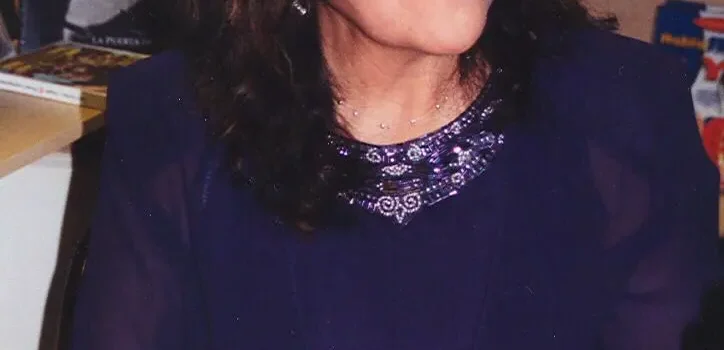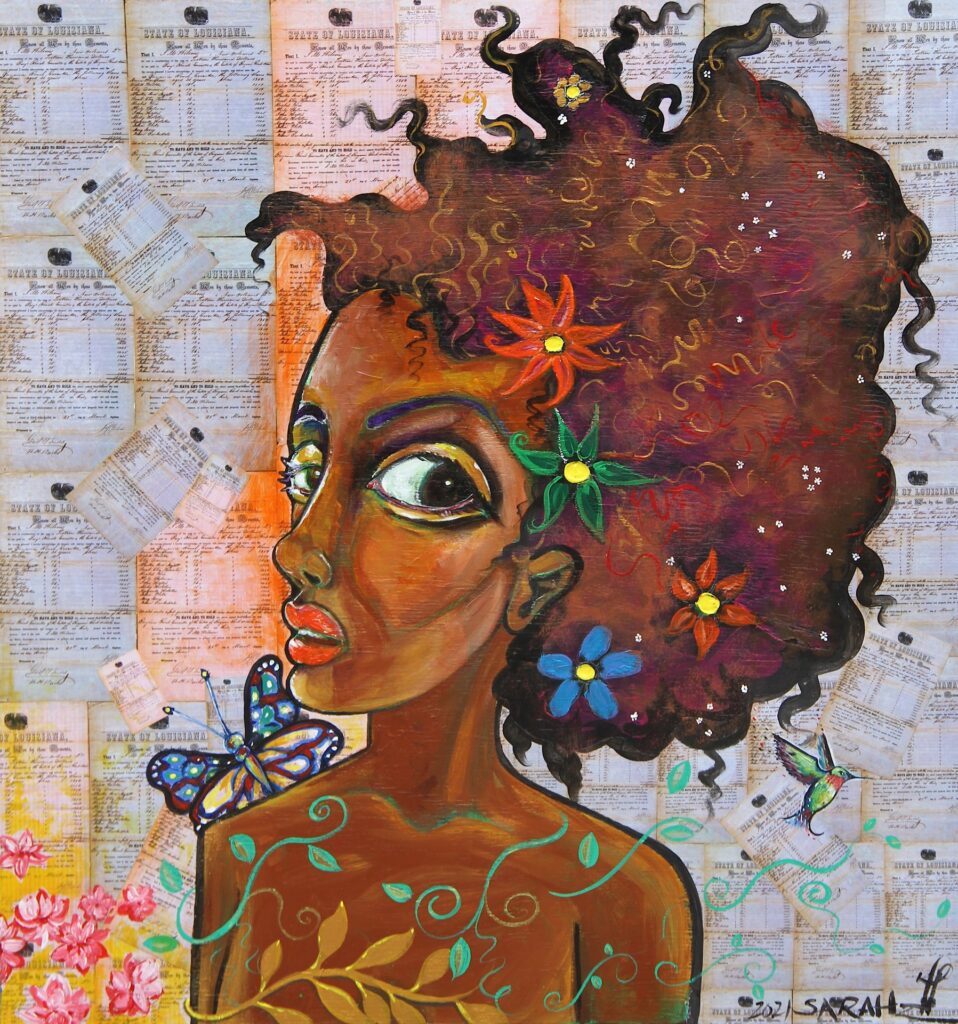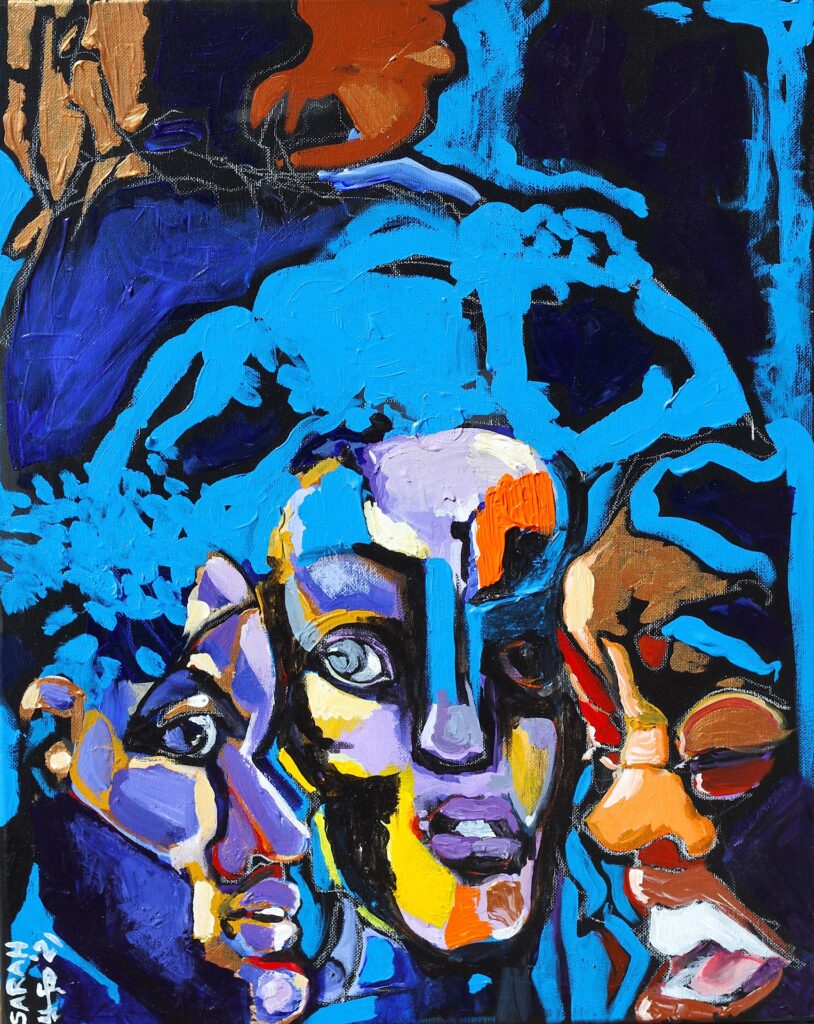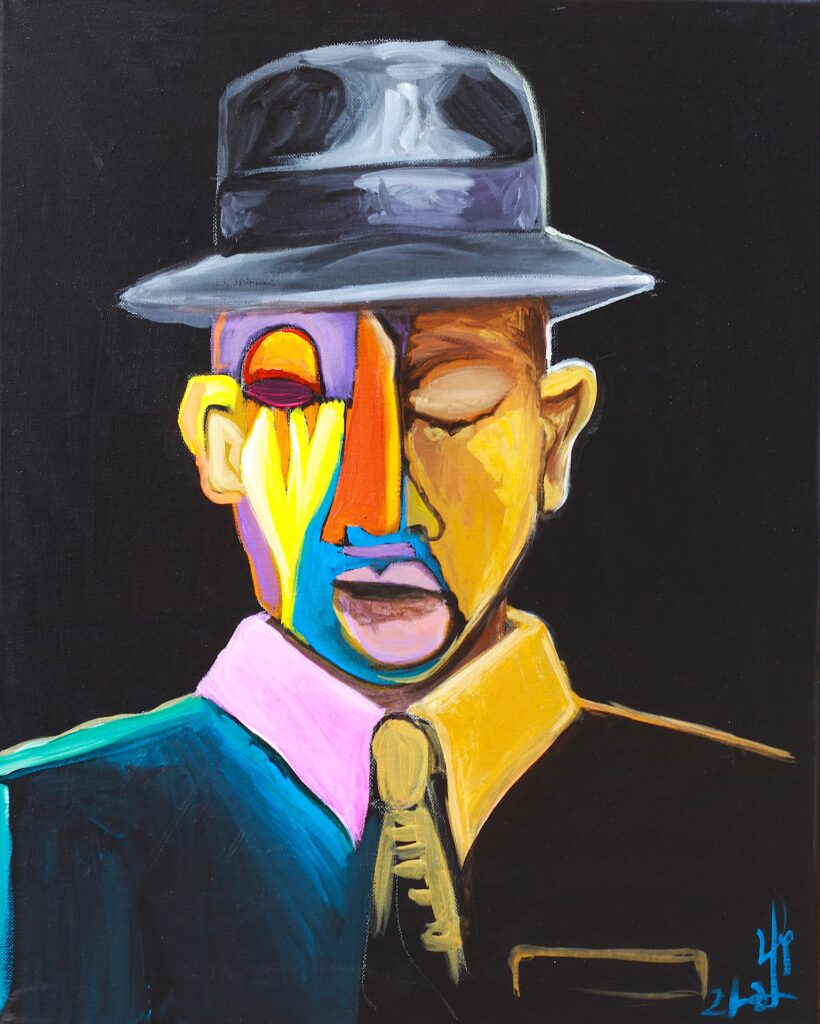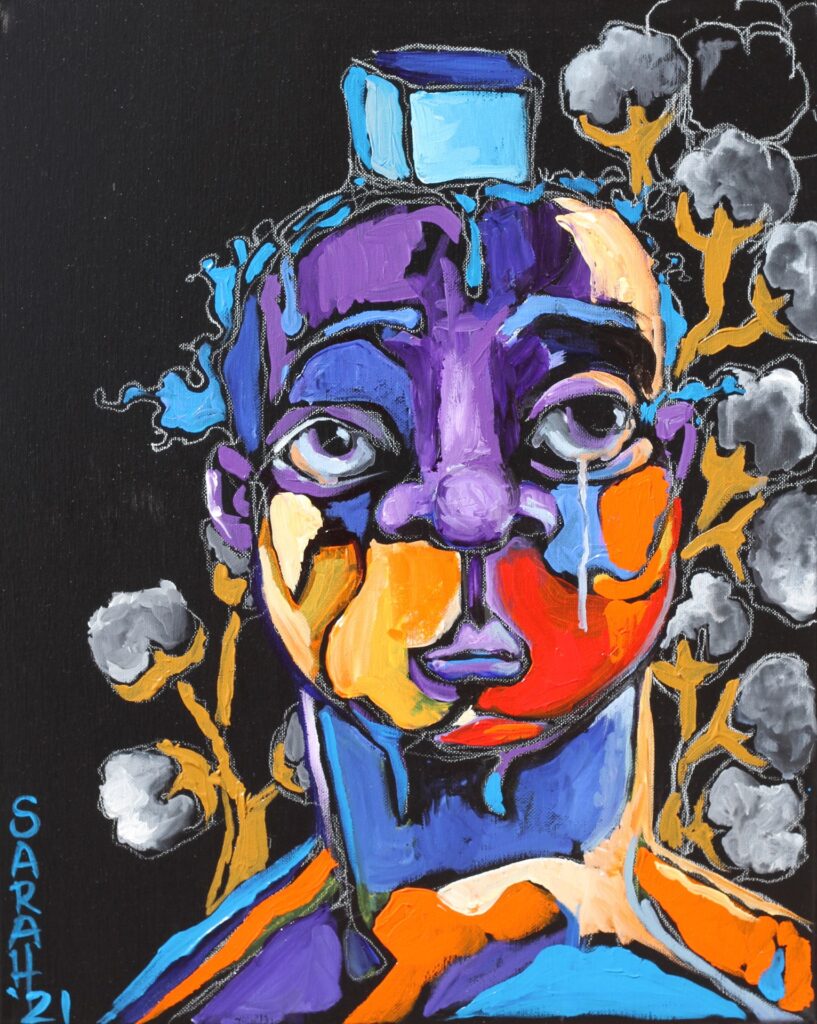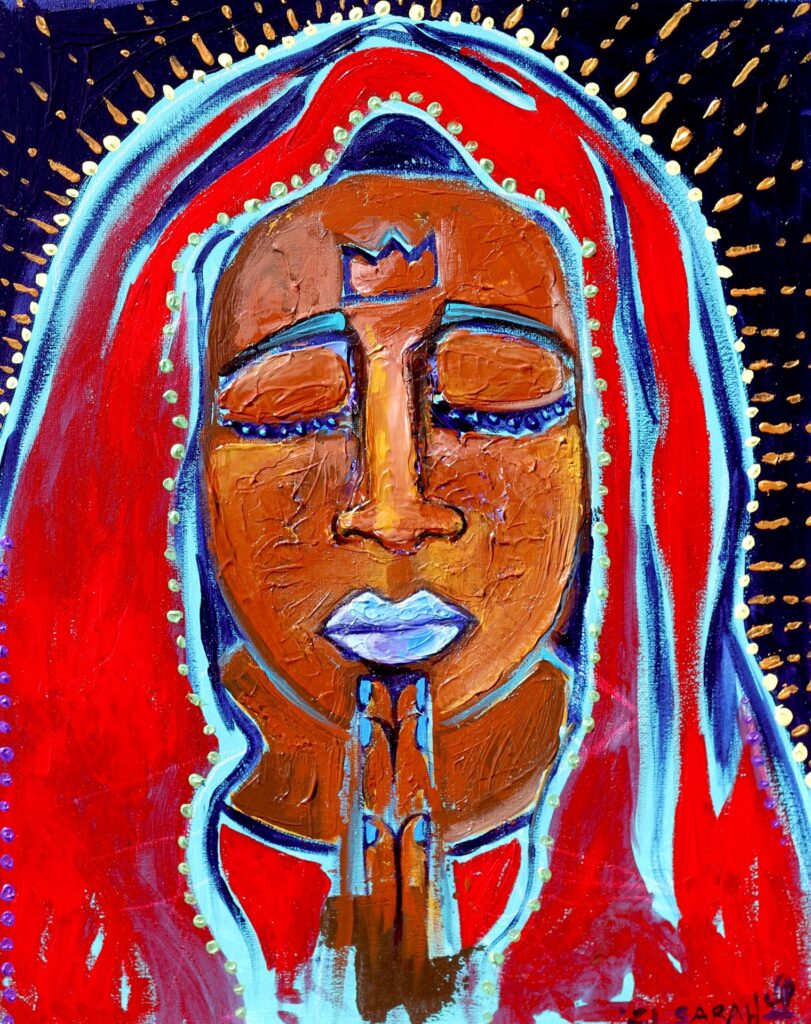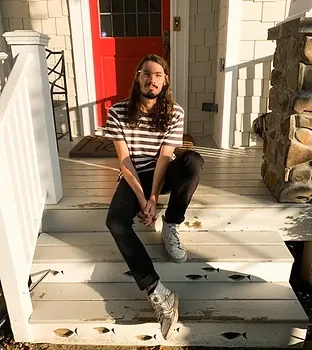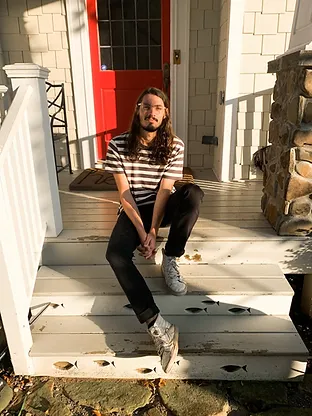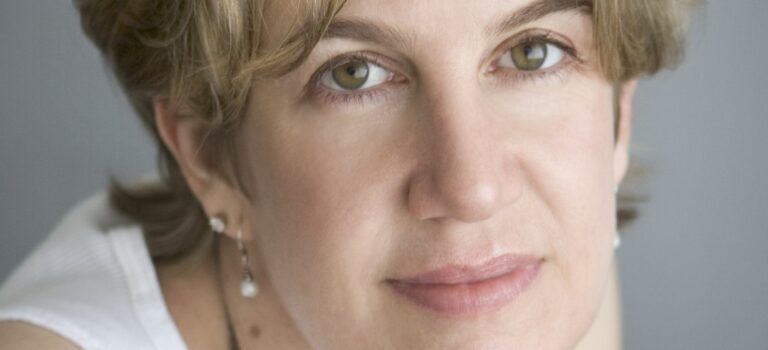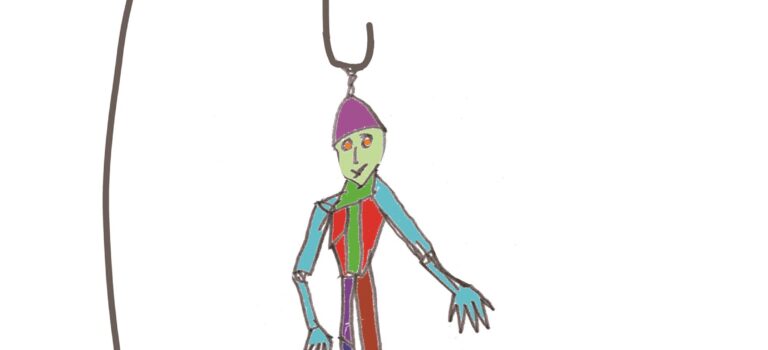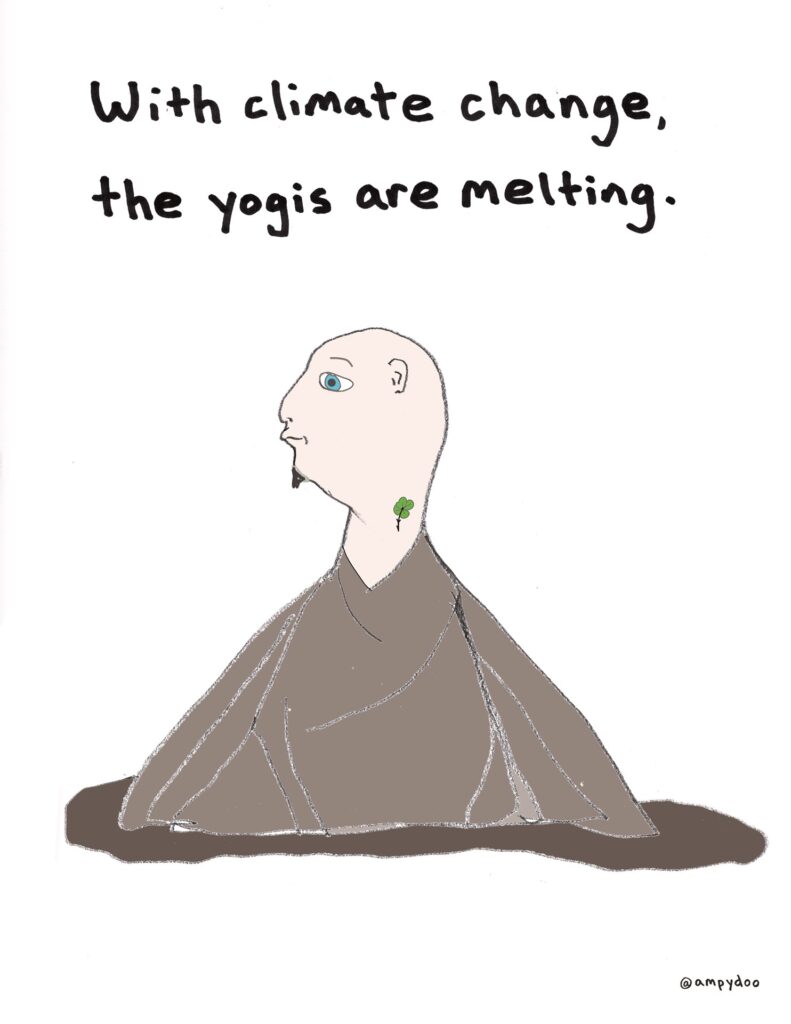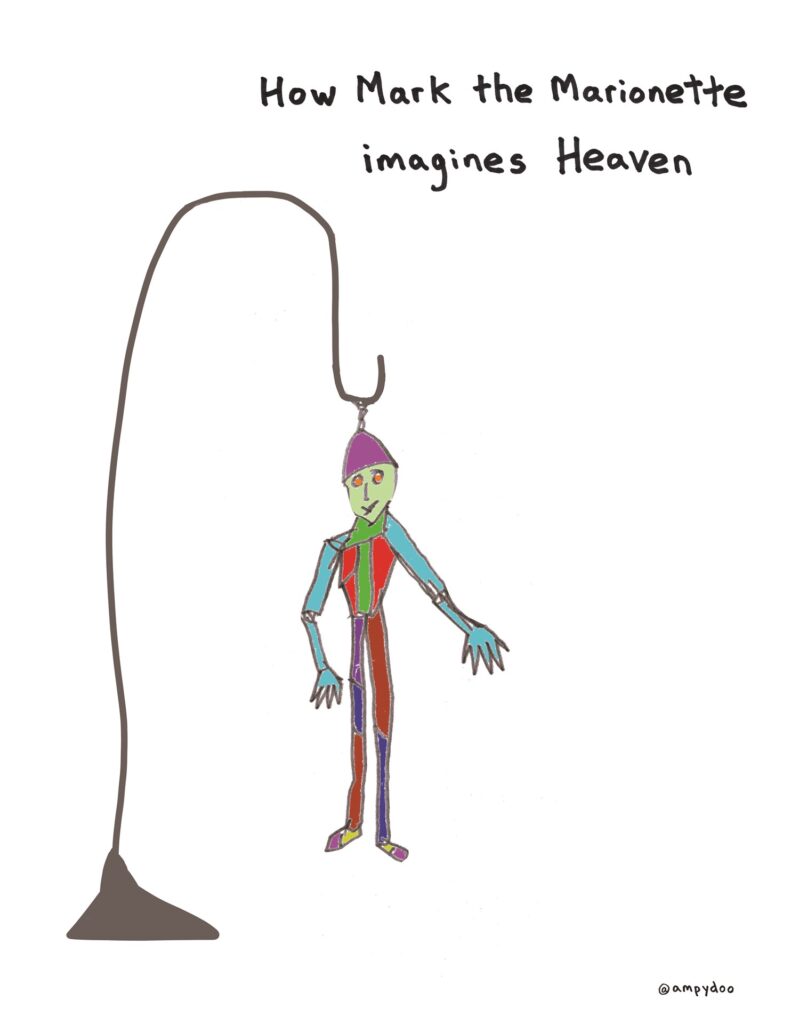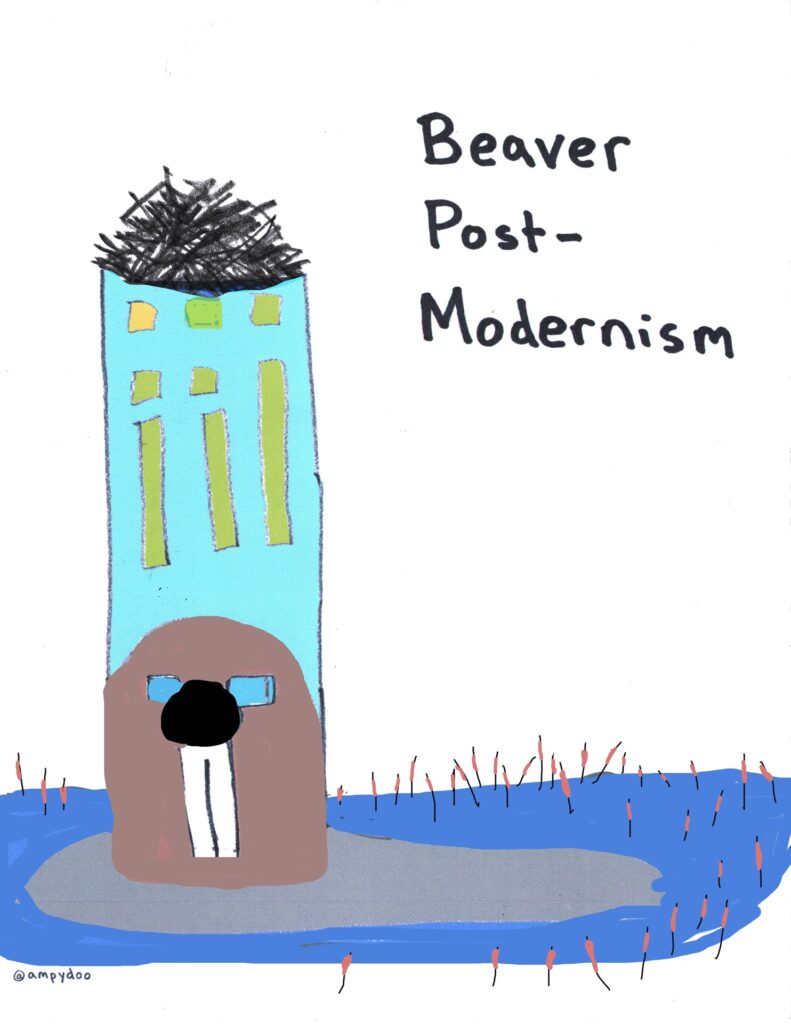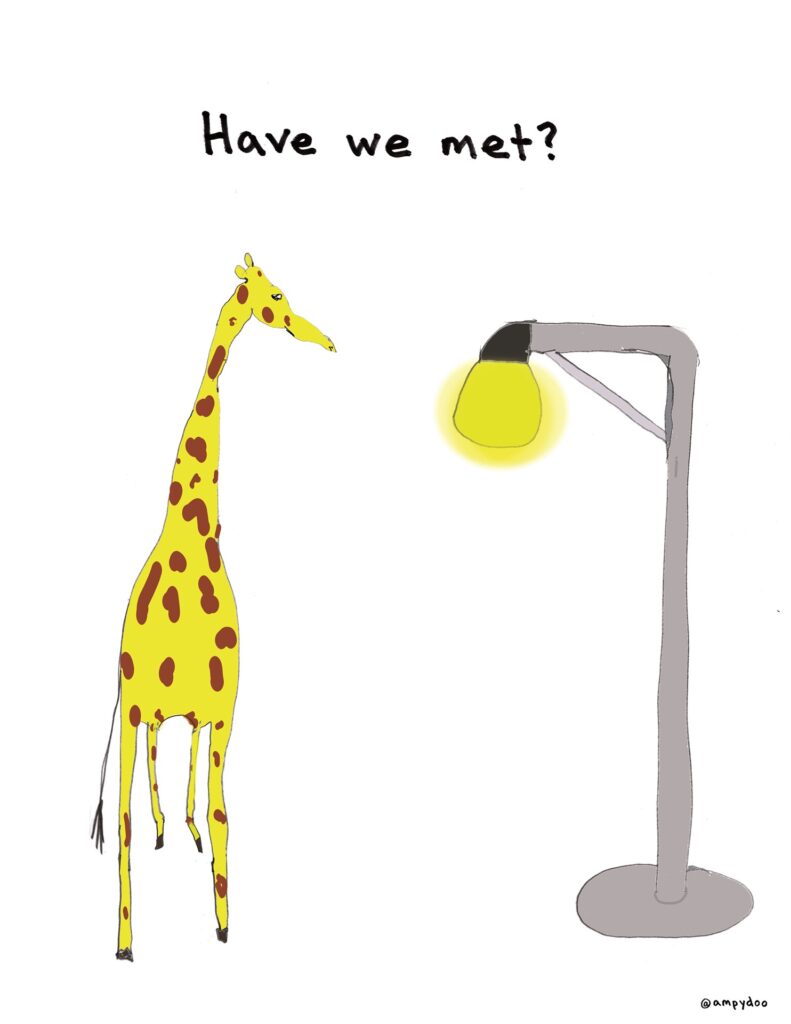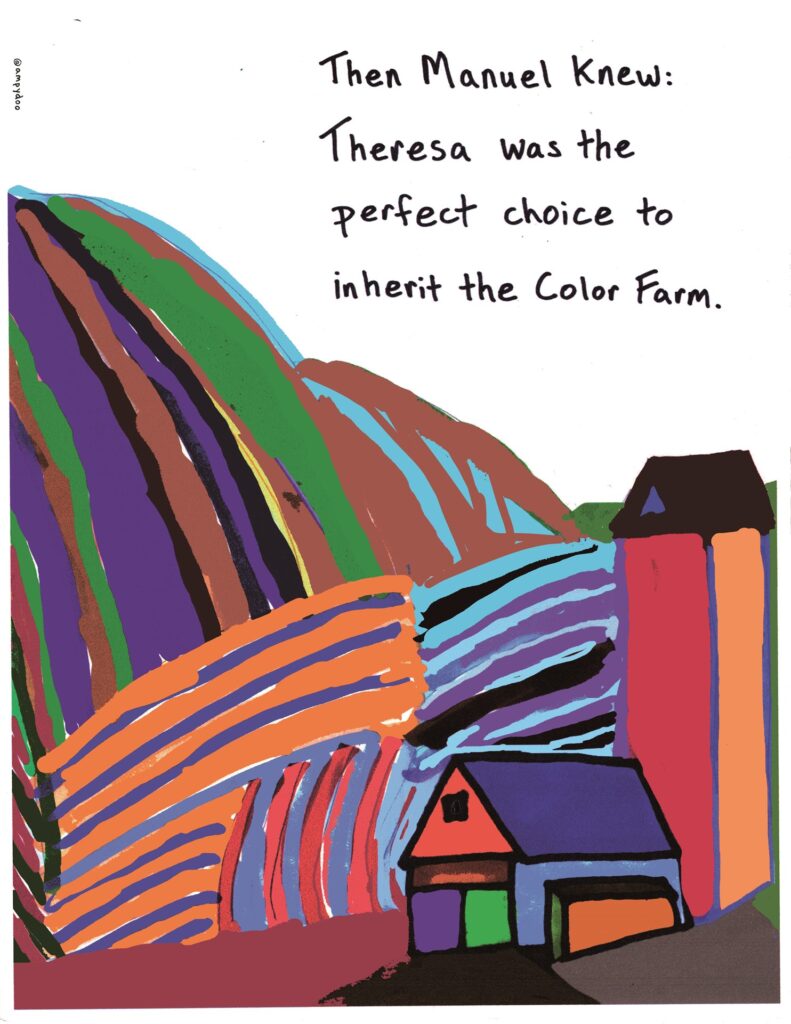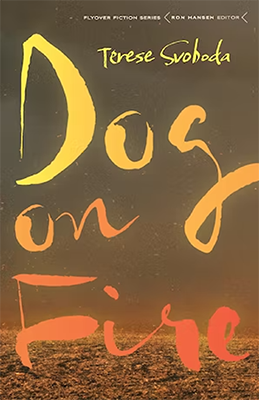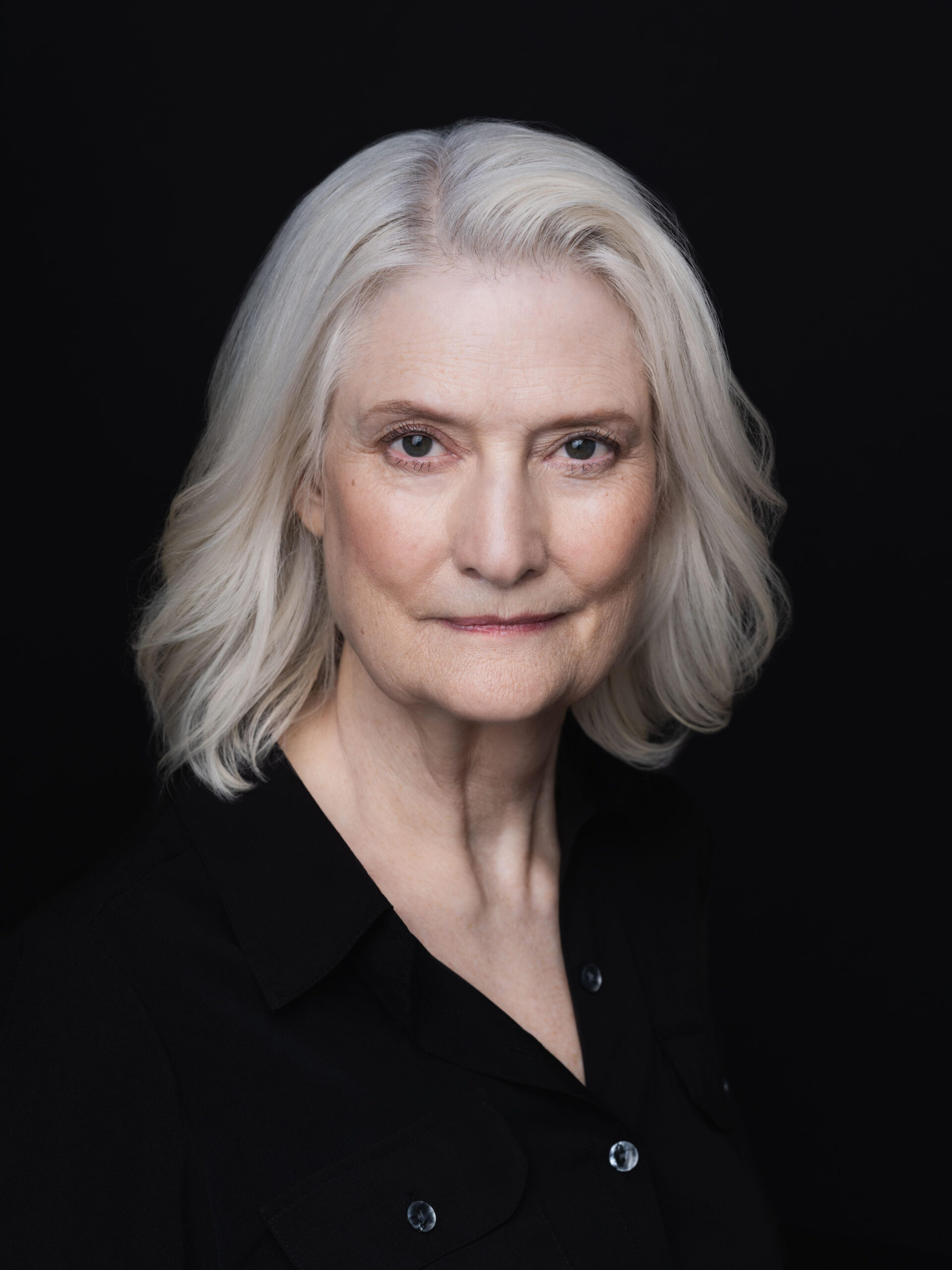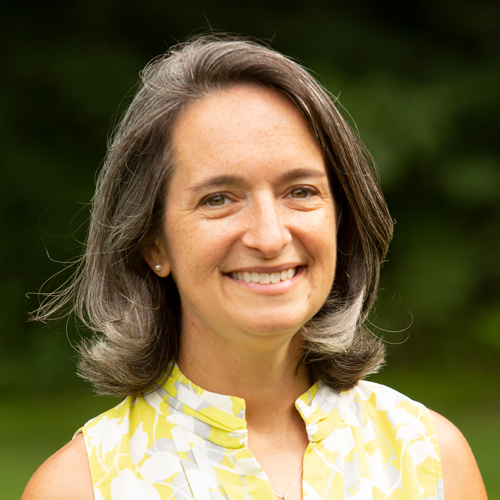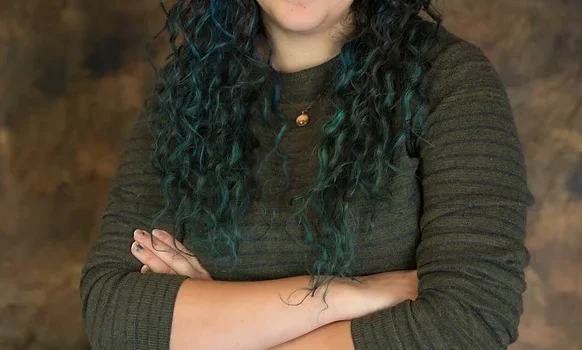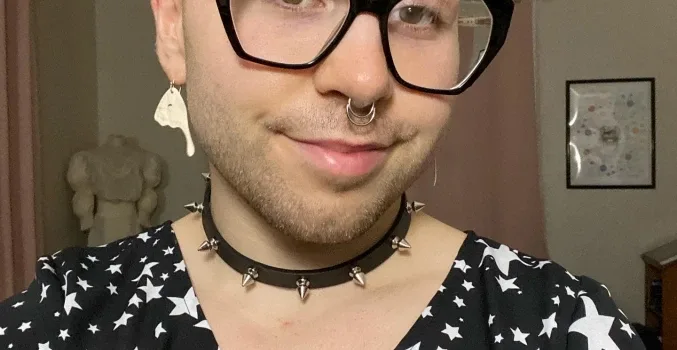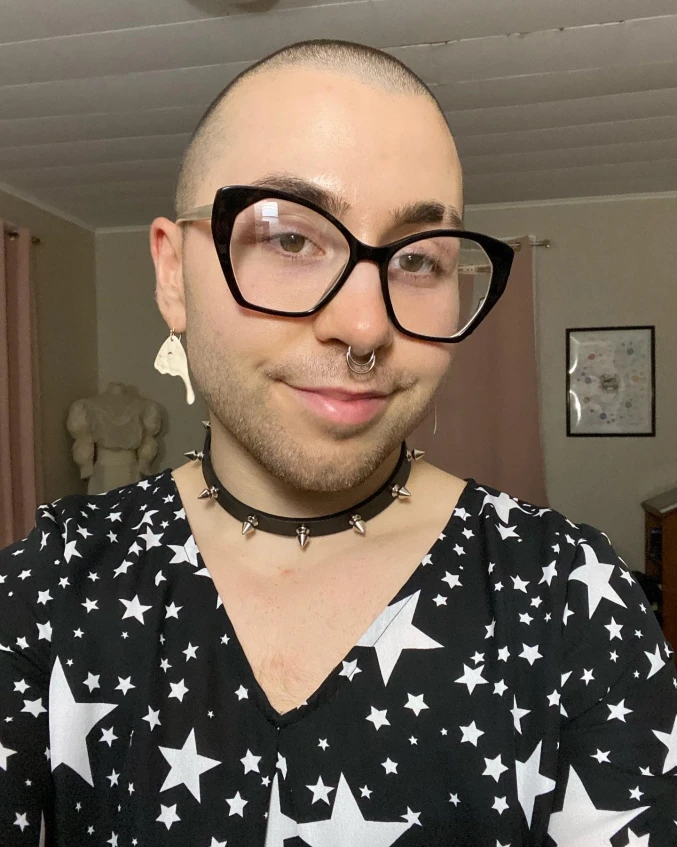My mother left for Mexico City in the middle of the night. It was really early in the morning, but it was still dark outside, and the sky shone with a million stars. Every star glittered in its place, a canopy of diamonds just out of reach. It was a cold November morning, the air an icy mantle. Temperatures in Phoenix were cold in winter, not freezing, but the morning Mom left for Mexico City was an exception. Mud puddles from recent rains formed tiny frozen islands all over our backyard.
My mother didn’t want me to miss school, so I guess that’s why I didn’t go to Mexico City with her, but I think there was more to it than that. Nobody else went either, except Tía Lola, her husband, Alfonso, and their son, two-year-old Fernando, who was born a water baby and hadn’t died yet. They were on a pilgrimage to the cathedral of the Virgin of Guadalupe, whom we simply called, La Virgen, in Mexico City, to visit the huge church built at Tepeyac where God’s Holy Mother appeared to an Indian peasant named Juan Diego.
“Are you gonna dip Fernando in the holy water?” I asked.
“No. There’s no holy water there, Patrisia. You’re thinking of Lourdes where Bernadette saw a vision of God’s mother.
“Will Fernando get well?”
“We’ll see. Your sister’s still alive, isn’t she? Which is another reason I have to go. I promised La Virgen when your sister was born that I’d name her Guadalupe, and that one day I’d make a pilgrimage to her cathedral to pay my respects. She kept poor Lupita alive! You see; I owe her. A promise is a promise. Your poor sister was born blue, dying the doctor said. Now look at her, three years old and perfectly well! I’ve kept half my promise by naming her Guadalupe. Now I have to keep the second half and go to Mexico City to pay my respects to La Virgen in person.”
“What color was I born?”
“Never-mind Patrisia,” my mother said, fastening shut one of the suitcases she was packing. “What’s important is that your sister’s alive, and I need to pay the debt.”
“What happens if you don’t pay back?”
“I don’t know. Maybe La Virgen will never talk to Christ on my behalf. Maybe I’ll have to do all the talking myself.”
Talking to God was a mystery to me. I didn’t want La Virgen to leave me to do all the talking. What would I say? Suppose God didn’t listen to me anymore because I said something he didn’t like. Maybe his mother would send a bad report about me his way, then he would be mad at me. I didn’t want to take the chance and cause La Virgen grief. Or even worse, insult God’s mother. I know how mad people get when someone insults their mother. Even my friend Nanette defended her mother and everybody knew her mother was a slut.
“That one,” my mother would say to our next-door neighbor, Tillie, “that one doesn’t even wash her sheets before she’s got another man sleeping on them.”
“Why would men want to sleep on dirty sheets, anyway?” I asked.
“Because they don’t know any better,” my mother said sharply. “Never mind, Patrisia, you’ll learn about it later.”
Tillie and mom were best friends. Tillie’s husband had died years ago, neighbors said from drinking alcohol, mostly cheap wine that settled in his liver. She was older than mom, and had grandchildren who stopped by on a daily basis to gorge themselves on the food she cooked. Tillie was good to Lupita and me. She liked to hold us and tell us funny stories, so I was okay with having Tillie take care of us while Mom was in Mexico.
I knew I’d be closer to Nanette’s house at Tillie’s, so close I’d be able to hear private conversations going on at her house just by standing near one of Tillie’s bedroom windows, or hiding behind the hedges against the fence. Nanette’s house was the neighborhood disaster. There was an old rusty car parked in her backyard and used tires stuck into the dirt to make a fence that looked like a hedge of black doughnut holes with weeds sprouting in the middle. Neighbors would walk past Nanette’s house shaking their heads, wondering when Nanette’s mother, Sukie, would get the yard cleaned up.
I had strict instructions to never play at Nanette’s because Mom said there were diseases there. I wanted to ask her what kinds of diseases, but the look on Mom’s face made me keep my mouth shut. Nanette was three years older than me, already in the eighth grade, while I was in fifth. Most every weekend, music pulsated from Nanette’s house—jarring Mexican polkas, hot cumbias and sad love songs played on their stereo at full volume. Sukie loved parties and she was generous with invitations. Cars would park up and down the street on both sides, and even block our front gate, which made my mother call Sukie on the phone and yell at her.
“Don’t go to Nanette’s while I’m gone,” my mother ordered, looking at her reflection in the mirror, touching up her makeup—red lipstick, dark pencil on her eyebrows.
“Why? Nanette’s my friend.”
“Don’t why me, Patrisia! It won’t be long before that girl gets pregnant. Here take this.” Mom said, handing me a small gold-plated medal of La Virgen on a chain. “Wear it for protection. God knows the Devil’s got his eye on every young girl.”
“Will this keep him from looking at me?”
“He can’t bear to look at La Virgen, it makes him jealous, so yes, he won’t want to look at you either.”
I looked up and saw my father staring at my mother from the door of the bedroom. He was solemn, like a man waiting his turn to see the judge, expecting the worst. His thin moustache skewed this way and that as he looked nervously from my mother to the two packed suitcases. Dad’s high forehead and dark, wavy hair made him look like a Mexican movie star. People said Mom and Dad made a stunning couple and I could see why. Mom’s fair complexion and dark hair and eyes, contrasted perfectly with Dad’s olive skin and handsome, rugged features. He walked up to my mother and put his broad, muscular arms on her shoulders, clasping both hands behind her neck, holding her close. He put his face, nose to nose, against hers.
“Wear the coat I bought you. It’s the warmest thing you have.”
“I know,” my mother said. She pulled away from the circle of his arms. He stood back, unblinking.
“Well?” She asked, pointing to the two suitcases. “Will you help me?” He stooped to pick up the suitcases and she walked out of the room. I followed my mother into the kitchen, taking in whiffs of her perfume, a dainty smell that reminded me of baby powder. I grabbed her hand.
“Don’t start Patrisia,” she said looking at the tears in my eyes. “I’ll only be gone for two weeks.” She held me close, and I felt the small, fake pearls sewn into her sweater press into my cheeks and lips. She kissed Lupita and me, stroking our hair. She held Lupita in her arms even though my sister’s legs dangled past her waist.
“Put her down,” my father said. “She’s too big for that.”
My father turned and walked out into the darkness with the suitcases, as we heard the crunch of tires on gravel—Tío Alfonso’s Oldsmobile creeping slowly into the pathway leading to my father’s makeshift carport. As I walked out, I saw Fernando through the car’s window sitting in his infant’s chair in the back seat, his head a huge, uneven circle with the forehead squashed in the middle.
Tia Lola was an enormous woman who sweated constantly. She always had a handkerchief in her purse to dab off sweat from her forehead and under her hairline. Tia got out briefly and hugged us all.
“Pray for my poor Fernando!” She said, “Why shouldn’t La Virgen heal him? She healed Lupita! ”
“Don’t start, Lola!” My uncle’s voice rang out unexpectedly loud. He opened the trunk and helped my dad arrange Mom’s suitcases, both men packing them into the already crowded space.
In the car’s dim light, I saw Mom’s face, a perfect pale oval. She sat next to Fernando in the back seat and closed the door against the cold night. She rolled down the window and reaching for my hand, she raised it to her lips and kissed my fingertips. “Don’t worry, Patrisia, La Virgen will take care of everything while I’m gone,” she said, smiling confidently. Then she rolled up the window and all I could see was her silhouette in the dark and the medal of La Virgen on her chest, reflecting one silver moonbeam. The car moved away and I saw my mother through the back window lean over, and imagined she was placing her hand on the sleeping Fernando. For an instant, I wished I had been born a water baby.
My father didn’t go to Mexico City because he said he had to work at the lumber yard. They couldn’t spare him, he said, the days were long, and the work was heavy, but I think there was more to it than that. There was always more to everything in my family. Nothing was out in the open. When you finally found out the whole truth, you were literally drenched in it.
That morning, Nanette came by, as usual, to walk with me to school.
“How’s your mom?” My dad asked her.
“She’s okay.” Nanette’s eyes shifted from my dad to me.
I stared at my father, dazed that he had asked Nanette about her mother.
“Let’s go,” I said, grabbing Nanette’s hand.
We walked in silence. Every step we took made the silence between us louder. The question I didn’t want to ask her was why my father had asked for her mother, Sukie, when he knew how my mother felt about her. Why had he even talked to Nanette? He never had before, except to say hello.
“You’re not going to believe what happened last night!” Nanette said. She stopped abruptly, looking both ways as if someone might be close by.
“What?”
“I started my period. It scared me. I thought I had cut myself, then I told my mother and she said it was okay, that I was a woman now and for me to wash up and grab a pad from the box in her room. I’m wearing my dark skirt today, just in case.”
“No!”
“Yes! And you’re next, Patrisia. You’ll see. It’ll happen before you know it. Your stomach will get upset, you’ll feel like going to the bathroom, then you’ll look down, and you’ll see blood.”
“I don’t want to hear about it!” I reached for the medal of La Virgen hanging on my chest.
“She won’t protect you! She had her period too.”
At school, Nanette held herself proudly. She was one of the eighth-grade girls who had already started and that put her at the same level with the school secretary, the nurse and all the women teachers. If I started my period while Mom was gone, she wouldn’t know I had become a woman until she got back and saw the look in my eyes, her look—seeing everything at once, then nothing. Formal with men, that’s the way I would be. Formal, like she was with my father, keeping him at a distance, turning away from him when he pressed her for conversation.
The next day, Sukie and Nanette came over. “Is your father home?” Sukie asked. She was dressed in a ruffled pink blouse tucked into a pair of black pants. I was ready to tell Sukie that my dad was asleep when he walked into the room.
“Oh, there he is. Pablo, I’ve got dinner for you and the kids. I hope Cristina won’t mind.”
“My wife, would be glad for anyone who fed her children, I would think.”
Sukie had a flowered ceramic pot in her hands and Nanette had a white casserole dish. “Homemade beans,” she said. “Just the way you like them, and grilled meat with picante sauce.” She had tortillas, wrapped in aluminum foil, “to keep them warm.” She said, and my father smiled.
“Join us Patrisia, come on, sit down,” Sukie said, setting dishes on the table and motioning for me to sit on one of the kitchen chairs. She sat in Mom’s chair, and it was all I could do not to yell at her and tell her to get off of it. I thought of the diseases Mom said were at Sukie’s house and worried germs would be crawling all over Mom’s chair.
Dad sat next to Sukie in his usual chair, Lupita sat next to me, and then Nanette. It was as if we were one big, happy family, except I was facing mom’s enemy
“What if my mom comes home right now?” I asked Dad.
“What if she does?” Señora Gomez just came by to give us a bit of food. Isn’t that a nice thing to do?”
It was the first time I had ever heard Sukie addressed as Señora Gomez. Nanette’s last name was Najera, so where did Gomez come from?
We ate, and in spite of my anger, I knew the beans and meat had been cooked to perfection, and the tortillas were hand-made, smooth and delicious.
After dinner, Nanette and I went to my bedroom to listen to the radio, but all I could think about was that Sukie was acting like my mother. Lupita was oblivious to everything, playing with her doll, pushing a doll carriage from room to room.
After only a few minutes, Nanette yawned. “Let’s go watch wrestling,” she said, “Mom and I watch it on Thursday nights.” It was then I noticed my dad and Sukie’s voices coming from the living room, instead of the kitchen. They were already watching the wrestling matches, laughing at the wrestlers. I could barely watch the match as I spied on my father and Sukie, happily watching T.V. drinking cups of coffee as if they were an old married couple.
Next morning, before I left for school, I walked Lupita to Tillie’s and ran straight into Tille’s arms. “Sukie’s acting like she’s my mom!” Tillie sat down on the couch and had me sit by her side. Her arm went around me, and I clung to her neck.
“Don’t cry, Patrisia,” Tillie said. “I’ll get to the bottom of all this today.” “What if Mom doesn’t come back and Sukie gets to be my mom?” My voice quivered, and instantly, my fingertips turned ice cold. “It won’t happen, La Virgen won’t allow that,” she said.
I clutched La Virgen’s medal dangling on my chest, drawing some invisible energy from the fact that mom and I were both wearing the same image. We were connected even if mom was hundreds of miles away.
Tillie must have done something while I was at school because when I got back, she told me she had dinner ready for us, and my father would come by after work and eat with us. After dinner, Tillie and my dad went out to the patio, and sat on two bamboo chairs Tillie had covered over with colorful sarapes. They talked, leaning close to one another, deep in conversation. Their voices were low, and I couldn’t hear what they were saying, but whatever it was; it was urgent. We finally went home, and my father said nothing to Lupita and me, except for us to wash up and get ready for bed.
Later, I saw him sitting alone in the living room, the light from the T.V. blinking back at him in the darkness.
Your dad used to be my mother’s boyfriend,” Nanette said to me while we walked to school the next day. That’s why your mom’s so jealous. Thought you might want to know.” Suddenly, she gave me an angry look and walked ahead of me, as if I was someone she didn’t want to be seen with anymore.
“That’s a lie, I don’t believe you!” I felt for my holy medal.
“Ask Tillie, she’ll tell you.”
It was all I could do to stop thinking about my dad and Sukie at school, and as soon as the day was over, I rushed over to Tillie’s. Nanette had left school early, and it wasn’t until later that day that I found out why.
As soon as I walked into Tillie’s house, I asked her if Dad had been Sukie’s boyfriend.
“I’ll bet Nanette told you.” Tillie said, stirring a pan of potatoes she was frying.
“But is it true?”
“Well, yes. But that was a long time ago.”
“Is that why my mother hates her?”
“There’s more to it than that, Patrisia.”
There was always more to everything. I wanted grown-ups to tell me the truth. Give it to me between the eyes. It would hurt for a good while, but it was better than not knowing.
At Nanette’s house I saw a pick-up truck parked outside with things from their house—boxes and furniture. It looked like they were moving, and later I found out Sukie had picked Nanette up early from school that day so she could help her pack their things. No wonder I hadn’t seen her walking back home.
“Are they moving?” I asked Tillie.
“Yes. Sukie and Nanette are leaving for Nogales, then off to family in Oaxaca.”
“But why?”
“It’s a long story, Patrisia.”
The long story fell in my lap that evening as I waited for my dad to pick Lupita and me up. He had called and told Tillie he was running late, and it wasn’t until almost nine o’clock before he came by.
Watching the commotion going on at Nanette’s, I couldn’t sleep, even though Lupita by then, was fast asleep. Tillie was in the kitchen washing dishes, as I crept out and quietly opened the patio door. That’s when I heard my dad’s voice coming from Sukie’s backyard. I moved close to Tillie’s thick hedges and listened intently. Through the mesh of leaves I could see my dad and Sukie’s silhouettes barely visible, standing facing one another. Dad’s arms were around her shoulders, his hands clasped around her neck.
“It’s the only way out of this,” he said.
“I knew she’d win! I just knew you wouldn’t have the guts to tell her.”
“What good would that do? It would only make more trouble.”
“I’ll send money, I promise. I’ve never stopped giving you money.”
I heard Sukie’s voice break, as if she was trying not to cry.
“That’s not what I want.”
“But she’s my child too, and I always keep my obligations. Things will turn out all right. Write to me—send the letters to your brother’s house.”
I saw my father hold Sukie in his arms, and for a brief moment their lips touched, and then he went off into the night. I walked back into Tillie’s holding onto La Virgen’s medal, not knowing how in the world I would ever face my mother again. I walked into the kitchen just in time to hear my dad knocking at the door. He was there to pick us up. Tillie brought out Lupita, still sound asleep in her arms and placed her in Dad’s arms.
“Ready?” Dad asked. He smiled gently. But how could he smile, I thought when I knew the truth. I said nothing, not knowing it was to be the first of many times I would find out truths that I would learn to keep to myself. I guess it was another part of becoming a woman.
Mom arrived early in the morning at about the same time they had left. Overhead, a million stars twinkled in the sky’s dark canopy. It was déjà vu—one of life’s circles that had been completed. Dad woke me up, and I ran out of the house in time to see Mom getting out of Tío Alfonso’s car. Dad had already unloaded the luggage, and in the car’s dim light, I saw Fernando wrapped in a blanket, asleep in the back seat, his head still huge and deformed.
“We’re back, safely,” Tía Lola said. “Thanks be to God!”
I felt the tiny, fake pearls in Mom’s sweater press into my cheeks and lips as I hugged her. A moonbeam bounced off the medal of La Virgen around her neck, and I saw her face radiate with a passion I had never seen before.
“Sukie and Nanette are gone!” I said looking into her eyes. In that instant, I realized Mom already knew.
It would be twenty years before I would ever see Nanette again, and of all places, in Mexico City, both of us, by then women who had been married, divorced, and now single. Her mother had stayed on in Oaxaca and by then my mom was widowed and still living in Phoenix with Lupita.
Nanette was a clothes designer with her own line of clothing, and I was a buyer working for a women’s clothing chain based in Chicago. Already seated at a table, Nanette was waiting for me in one of Mexico City’s swank restaurants. She was wearing a red linen suit with a black velvet hat decorated with a shiny rhinestone. Her look was sophisticated and sheik. I could hardly believe she was the same girl I had once seen walking out of the house that was the neighborhood disaster. I walked in wearing one of Nanette’s own creations, a light blue, tight skirt with a jacket trimmed in dark blue fur.
“Nice outfit,” she said smiling as she stood and hugged me.
“I love it! Your design!”
We both laughed and hugged again, holding onto each other. “It’s so good to see you!” She said, kissing my cheek. “The little kid all grown up!”
We sat down and sneaked looks at each other as we ordered appetizers and Sangria—two women hungry to find approval in each other’s eyes. The truth of who we were was suspended between us. A deluge was about to begin.
“Funny, how we’re both in the same line of work,” I said.
“Blood runs thick, I guess,” Nanette said, watching my reaction, closely.
“My dad died five years ago. I suppose you know.” The words our dad, hung in the air like a neon sign.
“Yes, I know, my mom was so upset.”
“So was mine,” I said, remembering my mom’s cold, aloof ways with Dad, and her endless tears after he was gone.
Glimpsing our reflection in a gilt mirror nearby, the resemblance astonished me.
“Your mom visited Mexico City once, long ago, didn’t she?”
“How could I forget? You moved away even before she got back.”
“Destiny, I guess. I see you still wear your holy medal of La Virgen.”
“Well, today I’m wearing it because I knew I’d meet you, and it has a lot of memories. Remember, we were both becoming women back then and who better to lead the way?”
“Where’s he buried?” Nanette asked suddenly.
Her words sent a small shock wave through my body, electrifying the space between us. “In Phoenix, at St. Francis Cemetery. I can take you there if you’d like.”
“I’d like that very much,” she said, lifting her glass of Sangria. “Salud,” and we both took a drink, Nanette’s eyes, shiny with tears.
The drizzling remnants of who we were cascaded between us, a crystal-clear waterfall. We stood underneath it—drenched.
Stella Pope Duarte’s writing career was inspired by a dream she had in 1995. Her first collection of short stories, Fragile Night, won a creative writing fellowship from the Arizona Commission on the Arts, and was named a candidate for the Pen West Fiction Award. In 2001, Duarte was awarded a second creative writing fellowship for her highly acclaimed, debut novel, Let Their Spirits Dance. Duarte’s work has won honors and awards nationwide. Her most recent novel Raul H. Yzaguirre: Seated at the Table of Power won the International Latino Book Award for Best Biography in 2017. Duarte was born and raised in the Sonorita Barrio in South Phoenix. An interview with Duarte was featured in issue 3.
We are also thrilled to share an interview with Duarte that discusses Drenched in further detail. This interview was conducted via Zoom by our Fiction Editor, Morgan Horner. Please note that the transcript has been edited for clarity.
Morgan Horner: Hello everyone, I am Morgan Horner, the Fiction Editor for Superstition Review. Today I have the pleasure of interviewing Stella Pope Duarte about her story “Drenched.” Stella is described as a magical weaver with a sure hand and a pure heart and praised as an author who will enlarge humanity. Her work includes novels, short stories, memoir, and much more. Duarte has won honors and awards nationwide including a 2009 American book award, a Pulitzer prize nomination, a Southwest Books of the Year award, and a Book Sense 76 Selection. Welcome Stella, thank you so much for doing this interview with us, I am so honored to be doing it. When I first read Drenched I just fell in love with the stories and the characters and I’m so excited to get to know more about it. So before we start, is there anything else you’d like to add?
Stella Pope Duarte: Well I’d like to say that I’m very grateful for this interview, because ASU—I love ASU, so I have high regards for the Superstition Review. I’ve been published there before. Anything to do with ASU I like to do anything complimentary that I can as an alumni, and just because I care for ASU. My daughter works there, she works for the provost. My daughter is very mathematical. I am not mathematical, I’m on the other side of the equation, very much images and [those kinds of things], but she is mathematically inclined. I’m just a very faithful alumni person for ASU.
MH: I’ll just pop in with our first question. In your memoir, you discuss how you create stories through revelations, vision, and dreams, as well as through experiences from growing up in the barrio. Could you describe the experiences that inspired you to write this story?
SPD: This story is actually an imprint of who I was as a child around the same age as my main character Patrisia. So we have Patrisia saying goodbye to her mother as her mother is on her way to Mexico City. Patrisia in the story lives in a barrio, just like I did, and “barrio” is not a Spanish word, it is an indigenous word. It means a small neighborhood … like a small town, because we lived in this (mainstream America would say) a terrible place, how they would describe it when I was around Patrisia’s age in the story. There was a documentary and they were documenting some of the barrios in Phoenix and they were saying my little barrio … (this is the way I heard it as a child on TV) was “one of the worst slum areas in Phoenix.” They were showing our humble homes—we were a combination of Black Chicano people in the barrio. Next door was my godmother (I was named after her, she was a wonderful lady), down the way was my uncle Solomon Pope because my aunt was Rosanna Pope (our ancestors were Irish as well), and then down the way was my house of twelve cousins living in [one] house. It was a real community. That’s where Patrisia’s from.
Right away it talks about the Bible … She is saying goodbye to her mother, exactly what I did, because my mother … was having a lot of trouble with her pregnancies. She had eight children. In those days, there was no protection for women, there was nothing really to help them … the doctors would have to go to the home to deliver the babies, or the midwife, or whoever it was they were using. So, my mother was having a lot of trouble with her last pregnancy, which was my sister Lupita, as is named in [“Drenched”]. My mother made a vow—and this was done all the time in my home—to whom: La Virgen. They called her “La Virgen Morena,” the brown virgin, because she appeared as an indigenous woman. She appeared to a peasant in April, 1581, 10 years after the Spaniards had come in and oppressed the indigenous tribes. The majority of them were the Aztec, there was many other tribes involved, but the Aztec called themselves “Machikas” … that’s where the word Mexican, Mexican-American, [and] Chicanos [comes from].
I’m a Chicana. You know, I was born on this side of the border but I have relatives in being from Mexico and Ireland, as well. Here they call themselves “Los Chicanos.” So in the story, Patrisia is like me, a Chicana. She’s born on this side of the border, but now, because her mother made a vow … to pay her respects to the Virgin if her child [survived]—this is true, my mother was having so much trouble with my little sister she almost died at birth. My mother vowed to loving La Virgen that she would go all the way to Mexico City to La Basilica where—I don’t know if the Basilica was totally built at that time, because they had an old church. But because Mexico is a Marshland it has a lot of earthquakes, so I don’t know if the whole Basilica [was] as it is now. I’ve been to the Basilica. If you have not been, those that are listening to me, if you have never been to the Basilica and La Virgen in Guadalupe, the Dark Virgin, you need to get over there. And I’m telling you one thing, [she] never spoke Spanish, she spoke to this peasant man in the language of the Machikas … people don’t understand that, she never spoke Spanish. She identified with the oppressed indigenous people. In every room of my mother’s house, there was an image of her. Either a candle, picture or little statue. She was a member of our family. You need to understand how powerful this image is in the story.
La Virgen surfaces again in some of my other work, but this work is specifically about her identification with this little girl, who is now saying goodbye to her mother. I was clinging to my mother and I remember it was dark outside when my mother left … I was terrified bandits would get her, she had to go through mountains, Heaven only knows if she’d come back to me. So at a time when this child, Patrisia, was going to face one of the darkest secrets [in her family]. I’m attracted to secrets—oh and I love rumors too, I tell my my college students “if you have any rumors just just tell them to me you know and I’ll build them into a story.” [Patrisia’s] family has a very dark secret, and this little girl is going to face it, when? When her mother is gone. And she’s not just gone, she’s gone to another country. She can’t call her on the phone or anything like that. Here you have Patrisia just swept into the elements of this family.
You know, the Latino family is very open-hearted, they talk about everything in front of their kids, but they also have their secrets, things they will not speak about. I [asked some] students, “are you good at guarding secrets, and who in your family has guarded secrets? How do you know?” All of this is very special to me, it’s the imprint of Patrisia, it’s really me as a child saying goodbye to my mom.
MH: That is so beautiful … Reading the story about the barrio [there was] a huge sense of community and just loving family, [I] felt that within me and I just love that you put it out on paper like that. That’s wonderful.
You kind of led us into our second question. Throughout “Drenched,” we see the recursion of the image of La Virgen through the medal given to Patrisia by her mother. Could you discuss how your faith has inspired and shaped your writing?
SPD: The faith in my family—I’m sure many other Latino Hispanic families, Chicano families as well—was huge, huge girl! I mean, for me to see my mom praying in front of the image of our Lady or El Niño Christo, Santo Niño de Atocha is what they call him, a little Christ child figure, was normal. For her to have … [A white] beautiful linen set with flowers because it was a day of love, eating, or whatever, it was normal. So my faith continues to be such a strong force within me, my connection to God, to Jesus Christ, it continues to live very vibrantly in me. And it was a part of our everyday life for me to hear somebody in the family say, “We’re going to ask La Virgen to guard us while we’re doing this,” or whatever, so it was like she was at the table with us for Christmas!
There was no separation of her, and then we had Saint Anthony’s Church. You talk about faith and how faith has… just gone into almost every story I’ve ever written—because it was so important! I would walk to the church, which is Saint Anthony’s, and it wasn’t far away—it was maybe I would say three miles four miles from home—you know crossing a few streets and getting to Central Avenue from 7th Avenue. But in those days children could walk, now they cannot. It’s too dangerous now … now you see a child walking, [you] call the police—I’m serious, because of the danger that we have now. But in those days you could walk with your little pals or by yourself. So I was a child that that wanted to be a good little girl—oh gosh—because I was horrified they showed us pictures of devils the old catechism, you know, Saint Michael fighting this demon with a pointed tail … I thought oh no I don’t want to go there, I don’t want to go to Hell. I used to go to confession every Saturday, I have no idea what I confessed—maybe that I kicked my sister’s doll? I don’t know what sins I might have had. But I remember going, [we were] so very dedicated. The Saint Anthony’s was not only a focal point for the faith, but for our culture, because [when] we would go there we would have fiestas, we would have the queen of the of the fiesta that year, music… So our entire culture was was set around the church Saint Anthony’s church and then the home became like a domestic church as well. There was really no separation and no sense of, “am I following the right faith?” There was no question about that. We were following the right faith. In our in our minds we’re worshiping God and his mother. So you see, the mother—is that where you’re asking me if she gave her that little medal?
MH: Mhm.
SPD: The mother gave her the medal of navitant because she was trying to comfort her daughter. You know, “Here, we’re both gonna wear the medal [of La Virgen Guadalupe].” You’ll see Patrisia grab the medal every so often, especially when she’s facing Nanette her neighborhood little friend and she grabs it she grabs it for support and it makes her feel that her mother’s close by. So you have a frightened little girl away from her mother for the first time in her life and this is what I went through, too, when my mom was gone. I was so glad when she came back it, was like she came back from the dead!
MH: It’s beautiful. Yeah, I immediately picked up on the medal and I just think it’s so wonderful how she just can find solace in this
tiny medal. It’s just so much more than that to her and I just think that it’s such a great image to have throughout the story.
So, our next question is: In this story, the main character, Patrisia, is approaching the age of womanhood but has not quite reached it yet, while Nanette has achieved womanhood by getting her period. Can you explain the intention behind telling this story through the eyes of a young girl instead of a young woman?
SPD: I think Patrisia needed to tell that story because she was the one struggling with her mother gone separated for the first time. Then all of a sudden and—I don’t want to give the story away because I want people to read it. I think it’s a it’s a story that that they hopefully they will enjoy and so I’m cautious that I don’t want to give it away—but as her mother is is gone, she’s going to find out something very important that is going to cast a shadow on her for the rest of her life, but yet she’s gonna face it. She’s going to have the strength to do it and part of her strengths comes from that medal, from La Virgen being present in her life as well. In other words, like—Nanette has already started her
menstrual. That was a big deal and it’s still a big deal for for young women and I lament the fact that in the United States we don’t really have, like some other cultures do, a ceremony. The indigenous do, I believe they have a ceremony, or when when young girls start their menstrual or they begin to be a woman we have Quinceaneras, but that is like when they’re 15 and they’re ready to go into society, not when they begin their menstruals. There are some cultures that do celebrate when the the young woman begins to [menstruate] because now she can have babies, you know, so here you have Nanette, her friend, walking and saying, “Guess what happened last night? I started my period,” so [Patrisia’s] like “What!” like “No!” and Nanette’s like, “Yes, yes!” So she’s very proud of that because now she’s like one of the women at the school and this eighth grader had started her menstrual, but [Patrisia] is in fifth, she’s not likely to start, but she’s horrified. And as she clutches the medal, of course Nanette says, “[La Virgen] had a period too!” … So now my character is afraid of this coming to be a woman.
When your mother’s gone … there’s an isolation that goes there, but I wish we would celebrate that more, because we don’t. It’s not only
a physical passage with of time within the child but it’s psychological as well and we don’t even address it in the school—I’m a long time educator from preschool to University, 30 years of university, college, everything—I’ve taught every age and there is no celebration. Bar Mitzvah is for the Jewish Nation to observe the entrance of a young boy and now I hear they’re doing it for girls as well, so I would want something to celebrate that more, but I wouldn’t even know how to begin. I remember when I first got my period I think I hit it for a month or two before I finally went to my mom I was like, hey Mom, because I was just so—it’s just not talked about enough I don’t think and I think it’s so interesting how in this story Patrisia, she’s not quite in Womanhood yet [and] doesn’t have her period, but she’s really entering in this adulthood where she kind of has to … learn these family secrets.
Of course in that story like that is kind of pushing her into the adulthood rather than getting her period like Nanette so I just think it’s and then she sees her dad respond to them in a different way that he had before. Now … she doesn’t trust her father as much as she does her mother, you see that trust level. She trusts her mother much more she does her father, but then she questions because Nanette tells her something very important, “Guess what? Your dad used to be my mom’s boyfriend! Thought you’d like to know,” and she’s in
shock! Again, clutches the medal. And her mother’s nowhere for her to run to, not the neighbor Tilley [who helps her out]. I wish there was [a] more conscious level of where a young woman is during that time. I remember that I was told to go down the alley—we live by the alley … I saw everybody go through that alley, from drunks to people just going to the Chinese Merchant store, because you have to pass the alley across the street [to get to the] Chinese Merchant.
There was always Chinese merchants in our barrio and they they spoke Spanish right along with us. I remember my mother giving me money to go to what they call the Chino store and buy a box of Kotex and I’m like no, I don’t want to go! I was such a shy kid at school but inside of me was this whole world of words. Words! We used to collect words. I used to sing them inside my head.
I thought people thought, “what’s wrong with her?” I mean I my mother would say, “I don’t know!” … I bought the [pads], I was humiliated. I’m glad he put it in a brown paper bag. So that’s how I took it home. Some women might be listening to us here and saying, “Oh my goodness, I have a story to tell!”
MH: Oh yeah, I’m sure every woman [does]. I know so many crazy stories from high school and people—my friends—were getting their periods, so I just I know every woman out there has an idea of how important getting their period is in terms of adulthood and womanhood. I totally agree with you. We should have some sort of like celebration for it because it is something that should be celebrated, definitely.
Moving on to the next question, as a mother of four and a grandmother, family is very important to you and I think this can be seen very clearly within this story. So what messages regarding family do you want readers to be left with after they read “Drenched?”
SPD: Family, for one thing—family is crucial in the Latino world.
And if I could say to the people who are in [a] family… There are stories to be told from family, and when I encourage my
students—because they say “well so I don’t do good with memoir,” that’s okay! You can take something like like the imprint that I had of myself being Patrisia saying goodbye to my own mother on a dark night when there was a canopy of glittering Stars overhead. I remember that as a child … and then the rest of the story is creative, so then you humbly move away from your story—how shall I say—you allow the power of the story to be told. Every single family has a way of addressing the stories that represent who they are and those stories can be represented as the nucleus of your theme.
As writers we reveal the human condition in our work and there’s nothing to show you that human condition more than a family. You have people that will take their stand and say this is what happened at Christmas and you say, no it wasn’t, that’s the Christmas you got that bike and I’ve got that stupid little transistor radio. [They’ll say] no it wasn’t, excuse me, but that was the time that you got that expensive radio—oh my gosh, and there’s a fight over a memory, right? I would just say to people you know keep track of the things that are important throughout your life, in your family life. Can you set them in two parts of your stories? Can you move away from them and create something new? That’s up to the person, because you don’t want to tie yourself down to something—what happens sometimes with people when they do memory work of their families is, “was the tablecloth checkered or was it [not]?” Memory is not accurate. You can remember it was a really rainy day [when] it wasn’t, it hadn’t rained in Phoenix for days, but those kinds of things are subjective. I would say don’t be afraid of anything to do with family.
[What Patricia’s story is really telling is] she’s she’s guarding the [family] secret, and actually if you notice when because—I wouldn’t want to get into the secret itself—but when the mother gets back … watch how beautiful it is [to tell your mother something] in a story. In real life, in a family without her mother telling her anything, just the look of her mother told her that her mother already knew … when [her mother is] gone, that meeting is going to take care of everything.
MH: That’s wonderful. Yeah, family is just—I think it’s something that’s just so important. You grow up around these people, they’re going to influence your life in so many ways, and I was blessed with three younger siblings so I definitely know how to pick apart their little actions, write them in my own little stories and I just loved the family and the community in this story. I just thought that was it was just so beautiful.
You have published works in several genres, from memoir to short story. Can you describe how your writing process changes and adapts for each form?
SPD: That’s a really important question because it has to do with this huge source of energy that is creative writing. Sometimes people don’t understand that. Well, they do, but we live it out each day and we forget that we are energy. That’s who we are. The blink of our eyes the gesture of our hand, our movements, the way we move this way or that way or the way we approach something… We are energy and creative writing is a huge energy. Unless we understand—I’ll say that again in in the last question, it’ll
connect with that—how do you connect with your own creative energy? I can’t tell you how important that was because as a child I used to go and read all kinds of books and come home with a stack of books. my mother would say I was going to go blind—well she wasn’t far from the truth! I’m like “can I still see?” because I was reading always so much.
Then I get the neighborhood kids together. I was real shy at school, an introvert, I was voted the shyest girl in school throughout my life. I would come in I had all these words … it was the creative energy. I thought it was just something wrong, how come people didn’t
think like this? I could describe anything at the drop of a pin and people would say “How did you describe that?” I have no idea! I just did it. So here I was, full of all of these words and all of these longings and all of these things that is part of the creative process and I suffer depressions—understand I’m talking to writers now. When you are producing something you’re way up here because that’s how strong creative energy is, you have to come down from there. This is why drug addicts who unfortunately get involved, you know, in getting their high—guess what, they gotta come crashing down. That’s why they’re going to go look for their drug again, to keep their their mindset because the brain is is no fool. Once it’s getting something from the outside it’s going to make the body demand that. That’s where the addiction comes in, I’m talking about something very separate, but creative energy also goes up then it comes down. See, I didn’t understand that at all.
Every one of these genres has its own creative energy. It’s the same energy, but it moves in the direction—if you’re a poet, some of you that are listening to this are poets—you have the same creative energy that I’m talking about, and it’s going to move in a different way. I want people to understand that writing anything is like writing a symphony. It really is. Your own voice is caught up in the paper … when I started with short stories—short stories in my mind is my strongest genre—I love short stories. I love short stories because, in a short story, you can take one thing that’s important and explore it more than than you could [in other forms]. You can do that in the novel as well, but in a short story you can do it in less time and maybe keep people more attracted to what it is you’re doing. So the short story is a powerful way to to do it if you can only stay out of the story—let the characters run your life. Let them push you around, let them tell you what to do, and don’t get in the way of the story. If if a person finds themselves too close to the protagonist, they may be stumbling on their own shoelaces. So they need to step back from the story.
The story in each genre is different. I found that when I started doing the novel I had to shift a little bit because the novel is longer and you can tell a little bit more. You can narrate more. A short story? No, it’s quicker. Your narration has to be specific, your dialogue has to be there, you always want to show more than you tell, and then of course poetry—it’s all rhythmatic. I’ve taught poetry to tiny little kids that have stood—I’ve showed them how to get on microphones and read their work to the public—and boy, I’ll tell you… Once they understand that it’s a deep [imitates beats] hump-ty dump-ty sat on a wall… Ah! “No they don’t have to be in straight lines, you’re doing poetry! You see how it’s the same energy, but you’re using it in a different way.
Then of course there’s screenplays. I’ve done it all—I’ve had one of my plays performed at ASU and they did a very good job. It was a one-act play about a community … related to immigration. It was a very painful type of experience, but I kind of put a [comedic] kind of layer to it, and I’ll be darned—I was in the audience watching my play performed at ASU West and the people loved it. I thought, “Wow, take a look at this!” They were charmed by it, they were clapping, and I thought “Oh so this is what it feels to do a play and to see the people’s reactions.” I’ve done a screenplay as well [adapting one of] my novels. That’s what I had [to write] for the big screen. Every one of them is a different kind of
energy, but it’s [also] the same energy. When I’m working sometimes with an editor, say, from Michigan, I remember that
he would um change a word in the sentence that wasn’t a spelling error, it wasn’t … a verb tense error problem … so I started asking, why did you change that sentence? He was putting it maybe in the way that he heard it. I said, don’t you understand there’s a symphony going on on the pages there’s a song being sung? I said that’s the way I do my work. That’s what you call the voice of the author. People want to read your word because they love your voice. I said, in other words, I was trying to tell them, don’t change my voice.
Every one of the writers—whoever’s listening to me—you have your own distinct voice. You might have to shift it or the genre that you’re addressing and you can do that, but it’s that same powerhouse that I’m talking about. The more you use it, guess what? Just like you practice baseball, you practice whatever sport, you get better … for any writer who’s listening to me now, if you are not reading your work aloud, no matter what it is, no matter what genre it is, you are failing yourself because you are not hearing what the readers are going to hear inside their heads. I always tell my my students at the beginning levels you don’t have to read it all the way to but, at the beginning levels you do, because you want to get your voice like a symphony on those pages. Then later you can read it silently so you can hear how you sound in someone’s head. Does that make sense to you?
MH: As a writer I’ve never read to myself. I will definitely start doing that now because I just I love that—how your voice is a symphony. I’ve never heard it that way before I think that’s really wonderful. I love that phrase, now I’m gonna put that on my inspiration board.
SPD: Trust me, I tell students [if they’re] going to be successful they’ll need to read their work aloud to themselves so they can hear how they sound. They’re like, “I sounded like that?” and then the realization of how real your voice is on paper.
MH: Wonderful! That also leads us into our next question. You’ve taught and spoken on creative writing for many
years, what is one piece of advice that you find yourself repeating most often and what is one piece of advice that has
been most helpful to you?
SPD: Well for one thing what I encourage [writers] to do is respect their own creative energy. Take a look at where their Creative Energy is going—the highs and lows. I’ve presented all across this nation and when Covid hit, it took that away from me, the ability to go all over the place and [present]. Now I’m zooming in here, I’m zooming in there, I’m zooming into classroom, I’m zooming into conferences, whatever, but I used to come home—I have four children, I had three jobs. Anybody who tells me [they] don’t have any time, I’ve been to so many conferences and sometimes I’m the keynote speaker [or] I’m a workshop person. People will tell me, “It’s just as soon as we sell the house I’ll have more time,” or “I’m changing careers right now. As soon as that happens I’ll have more time.” There’s never a good time. You have to carve out the time for your work to be done because there’s this force inside of you. And if you don’t relate to that force, whatever you ignore, it becomes a squeaky wheel and it becomes almost your enemy… It’s going to take you down in one way or another because you’re not paying attention to that force that is your own strength. It’ll start squeaking.
I do a lot of “dream work”, so dreams are very important to me, too. I have my whole thing [of] writing through revelations, visions, and dreams, and that’s my own little memoir and this is [all] internal stuff. Inside of every one of my writers—I tell my writers, trust your self, trust yourself, look internally. The writer is in here. The writer is not out there scattered, the writer is internal, so respect that internal writer. I told them if you have things that come to you while you’re writing from left field—out of nowhere, all of a sudden, you’re thinking of some Insanity—it’s not insanity… You’re writing a short story or you’re writing poetry, it’s a writer within you giving you something that appears to be disconnected. I tell people one of the reasons why we’re on the earth is to connect the dots of who we are. Nobody can connect the dots of who you are, Morgan, except you. You, who pays attention to an internal part of who you are and begins to say, “Wait a minute—oh, I see, okay, right! So, that’s what happened when my mother left from Mexico City,” Patrisia [realizes], “That’s what happened [that caused her mother to] move away from the neighborhood…” Now she’s connecting the dots.
If something comes from left field—I’ll give you a real quick example—I was writing Let Their Spirits Dance released by Harper Collins … I was writing in the beginning parts of of the novel. So I’m here, I am writing it, all of a sudden I start thinking of bats. You know, bats that fly out and at night and see insects, then go back to their cave and so forth. Bats. I kept on writing and the bats kept coming into my mind so now, little by little, I learned how to stop and go to left field—I mean things that don’t make any sense. So I closed the document I was working on and I opened a new document on “bats,” [the] word “bats.” I started writing on these crazy bats—oh my God—one of the most powerful characters that I have ever worked with appeared through that left field experience.
here comes [character] Don Florencio, a (tlachisqui)—an ancient word in the machika language meaning “a seer”—here comes Don Florencio into Let Their Spirits Dance, so powerful that he almost took over the entire novel. And he came out of the word “bats.” Had I not followed left field into the word bats, I would have never known Don Florencio. I had to calm this old guy down—I’m serious—I don’t know who’s going to play him in the movie, but … I said, “Look, don’t Florencio you can’t have this novel.” This novel was suggesting he’s the one that was killed in Vietnam … He permeated the novel all the way through with his magic and his ability to see through everything. So don’t be afraid of left field, okay, and let me tell you something very important—I get asked this all the time, every conference I’ve ever been to, somebody is asking me this. I was just asked the other day because I was zoomed into a high school class a, writing club—[about] writer’s block.
[They ask me about] writer’s block. I have had people in conferences raise their hand … “I haven’t been able to write in like a year,” and there’s almost tears in it. Sometimes people are almost teary-eyed because they can’t write and got writers block. They don’t know what to do… I tell people everywhere and I tell my students and I told the kids two weeks ago when they [asked] what writer’s block was. I said, “Are you guys ready? I’m gonna tell you the secret of writer’s block.” When I say that to a large audience I can see them with their little pens ready to write down Stella’s secret. I said here’s the secret about writer’s block: it’s a lie. it’s a lucrative lie. People make a lot of money selling that lie. You go on the internet right now and put in the words “writer’s block” and you’re gonna find a bunch of books that are going to give you the solution and how to get out of writer’s block. So you can continue to do your work but it’s nothing but a lie. You know what writer’s block is? It’s just a silent writer inside of you. Just like when something is brewing you’re cooking something in the oven and you gotta leave it in there for 13 [or] 15 minutes, and then it’s done, there’s things brewing. You cannot push your creative energy … the Creative Energy is so powerful it will push you, you don’t have to push it, so you wait until it’s ready—let me tell you something about creative energy and this crummy thing of writer’s block. Our internal person doesn’t go by [your] wrist watch. It’s inside of you, you’re timeless.
You’re a timeless human being. You can wake up at two o’clock in the morning—when I often do—on my night hour you can call me at two in the morning and I will answer the phone, I’m [a] hopeless night owl. I do a lot of work because there’s no calls. I had four children, you can imagine them, I’d come home tired from New York City or whatever and they were fighting over a bag with potato chips. Reality hit me real quick. Mom’s home now, oh my god get all the dirty clothes and—oh my goodness. By then, some of them were teenagers, so they’re supposedly taking care of themselves … but don’t be afraid of the energy inside of you, of communicating with it. You might be at an intersection … you might get the next part of the story just like that. One time my kid wrote it on the palm of his hand because we were driving, I
said, “Son write this word down I need it because it’s part of the story,” and he goes, “Where Mom?” [I said], “Write it in the palm of
your hand—get my pen.” So he writes down what I told him. You can get a revelation anywhere. Revelation is just understanding
something that’s already there inside of you—am I making sense?—it’s already there!
You’re the one who has to be conscious of it and don’t believe a bunch of lies. Trust who you are … let your characters push you around, that’s okay if they push you around, they don’t want to obey you that’s fine. They don’t need to obey you, you’re just a scribe, you’re at their mercy. Writing is the human experience and we have the right to tell it … [and] do not ever send to submission a first draft, don’t do that. Because the first draft is a jumble—it should be a jumble because you’re getting everything together. It might go this way, it might go that way… The other day I’m on a board—I don’t want to name where I’m on a board for—one of the solutions was the first draft and I said right there we should not have gone forward any longer because the first draft is never ready. Trust yourself, be careful, this is real important are you listening to me. writers? Be careful who you show your work to. Not everybody’s a writer … you might go to a friend who isn’t really a creative writer who might look at your work and say this is pretty good and it might be the worst thing that that has ever been done. So be careful … that person can destroy your work—especially when you’re barely starting to work and you show it to somebody and they’ll say that’s that’s really good, you should go this way, they don’t know because you don’t have your story set. The story belongs to you—or the poem or whatever—you’re the one who has to form it now once you get it straight.
Do you know how many versions I have of my work? I’m a workaholic—look at me—you can tell already sometimes I have played versions of one novel and that’s not enough but I still have to polish it and nobody has seen it yet. Maybe I’ve read a few things to people. I have my … wonderful sister of mine Rosie who passed away and she was my greatest supporter in the family. I still turn to her even though she’s gone. I tell her, spiritually, you know, “Sister you know what a knucklehead I am?” Then I seem to get an idea, “Thanks sis.” Use whatever causes you more power but be careful who you show your work to. Be sure that you at humbly stepped away from it to allow your work to come forth from you and then with confidence you might show it to someone. Does that make sense to you?
MH: Yeah! Awesome. This was so insightful and I deeply enjoyed this interview thank you again for agreeing to do it I’m so excited for our SR followers to read your story and learn more about you and “Drenched.” This is just so much fun, thank you so much.
SPD: Thank you thank you for your time. I appreciate it very much. God bless you.
